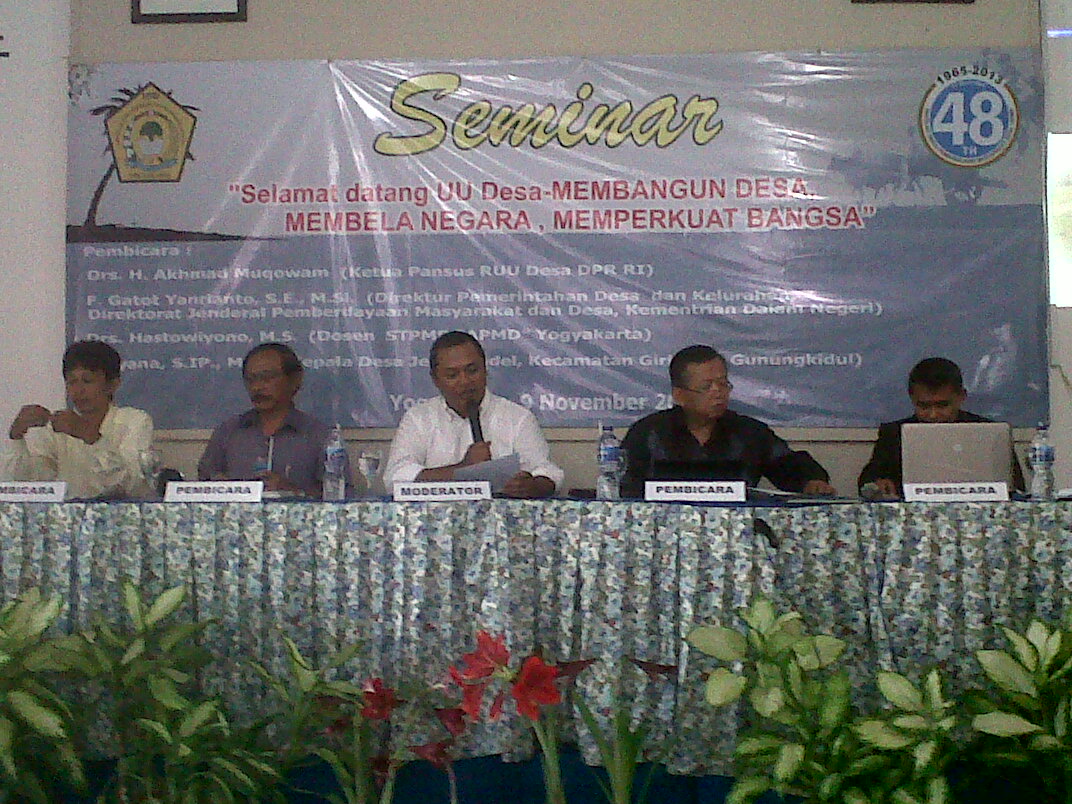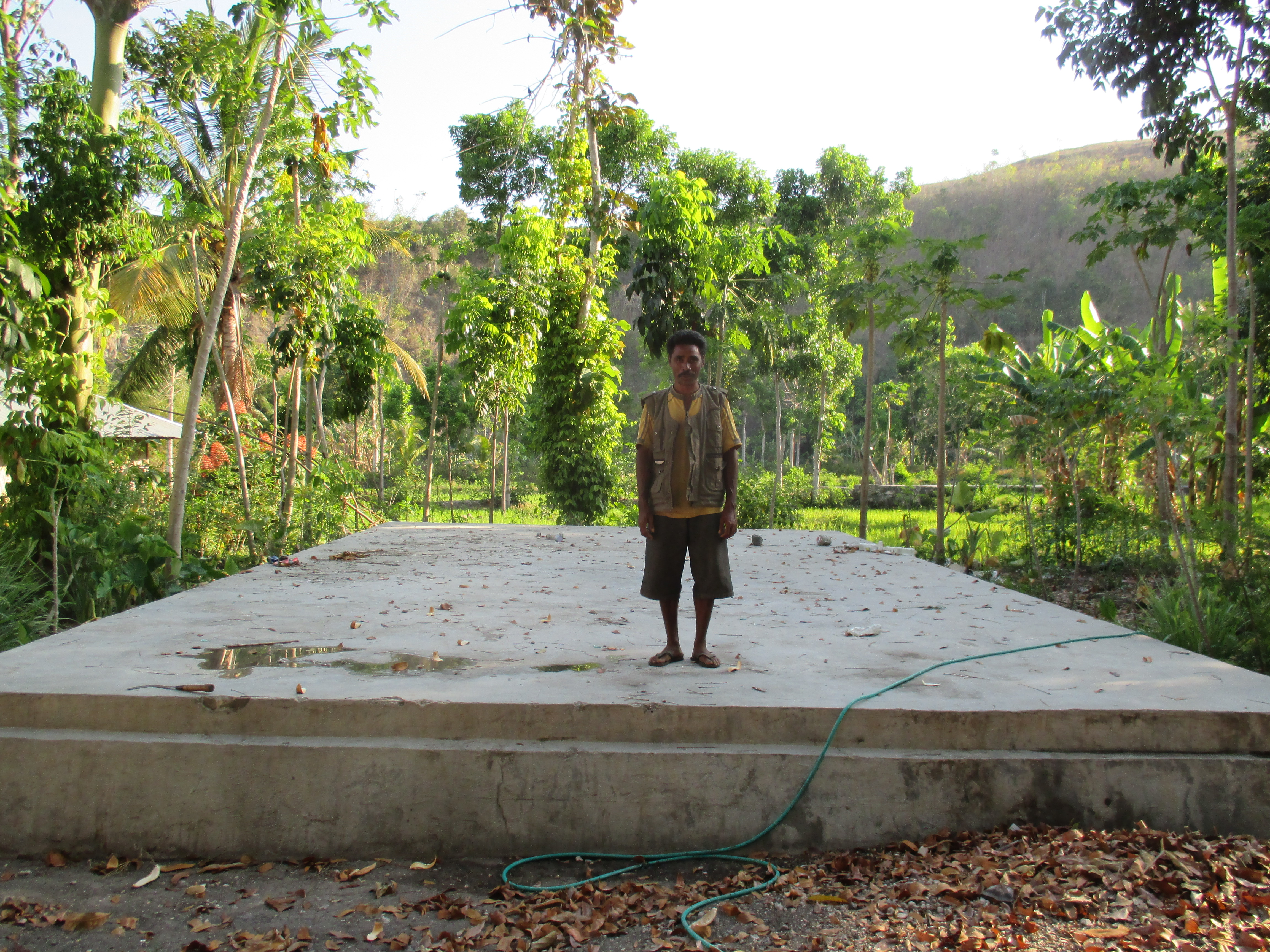The new Village Law could substantially change Indonesia’s villages. Not necessarily for the better.
Ward Berenschot and Jacqueline Vel
In January 2014 then President Yudhoyono signed a law that, when fully implemented, could substantially change the character of Indonesia’s approximately 74,000 villages. The new Village Law (No. 6/2014) dramatically increases the responsibilities and budgets of the village administration. Villages receive large development grants from the state’s budget of up to Rp. 1 billion (approximately US$75,000). The responsibilities and powers of village heads and their staff will also receive a remarkable boost. Villagers are supposed to take a more active role in the public life of their villages. Such provisions potentially provide for a radical change of village life in Indonesia.
That is the rationale for this special issue. The articles in this edition of Inside Indonesia discuss the intentions and content of the Village Law, the results so far and the possible impact the law may have. The articles are based on a selection of papers presented at a two-day workshop held 19-20 May 2016 in Leiden, which brought together practitioners and academics to discuss these questions.
Before the 2014 Village Law
During the New Order villages were governed in a rather authoritarian manner. From 1975 onwards the village heads were not elected by the village population, but instead selected and appointed by the district head. Many village heads were people from outside, such as retired military officers. As political clients of the national regime, these village heads regularly prioritised the interests of the state over the wishes and needs of villagers. Villagers lacked the means to keep a check on the functioning of village heads. The rather powerful position of village heads often led to abuses of power. For example, the village head’s authority to grant permission for land acquisition became an important means of corruption.
In 1969 President Suharto issued a decree about dana desa, an annual grant to all the villages in the country. He pushed for unification of village governance. In 1979 he enacted the predecessor of the current Village Law, Law No, 5 on Villages. That Law defined the desa as an administrative unit under the coordination of the camat (sub-district head).
After the demise of the New Order in 1998, villages became more autonomous. Under the 1999 law on regional government, villagers could elect village heads who no longer needed to be approved by higher authorities. These village heads were now accountable not to the district government but to a new, elected village council, called badan pemusyawaratan desa (village consultative council, BPD). At the same time the Indonesian government adopted a nation-wide participatory village development program, the national program for community development, or PNPM. This program circumvented the district government in providing funds for village infrastructure and basic services. The PNPM stimulated villagers to participate in meetings to develop proposals for how these funds were to be used.
Yet for many other expenses and projects villages still depended on district governments. To obtain such funds, villagers needed to engage in extensive lobbying, often in competition with other villages. This meant that in practice rural development became somewhat uneven. Villages with skillful and well-connected village heads could receive many projects, while neighbouring villages lacking such contacts could be left out.
Why a new Village Law?
In theory the 2014 Village Law aimed to end such practices. Three main aims can be discerned. The first aim is to make village governance more participatory. At least in spirit, the village law aims for greater involvement of villagers in the development of their village. In doing so, the Village Law explicitly builds on the experiences of the PNPM. The new Village Law similarly puts considerable responsibility in the hands of villages for decisions regarding village development. This fits a broader trend of ‘community-driven development’ that sees decentralisation as a boost for accountability and development. In this respect the new Village Law is actually quite remarkable: the law marks a considerable retreat for an Indonesian state that, not too long ago, was used to impose its developmental policies on villages from above.
The second aim is to strengthen village government. In this respect the Village Law differs considerably from the PNPM. While the PNPM operated largely independent from the village apparatus, the Village Law places the responsibility for these increased development budgets primarily in the hands of the village head. Furthermore, the Village Law lessens the dependency of villages on district governments. Previously, villagers needed to lobby bureaucrats and politicians in the district capital to obtain development grants (other than those under the PNPM). By putting development grants directly in the hands of the villages, the Village Law aims to do away with such practices.
A third aim of the Village Law is to respect cultural diversity in the way in which villages are organised. The New Order regime basically imposed a Javanese model of village administration on a highly varied landscape. This law forced villages to adopt state-appointed village heads, at the expense of other customary authorities that villages outside Java used to depend on. The New Village Law partly reverses this, by allowing villages to become desa adat (customary villages). In doing so, the law allows for the recognition of different kinds of village authorities and even provides scope for greater recognition of communal patterns of landholding.
Unintended consequences
The articles in this special issue take stock of how the Village Law’s provisions might work out. We emphasise that this is an early, and thus tentative, evaluation. Three years after the adoption of the Law, its implementation has barely begun. However, by drawing on a combination of legal analysis, on-the-ground fieldwork and conversations with activists and civil servants involved in the implementation process, we feel this special issue can identify a number of important trends.
A first main conclusion is that the eventual impact of the Village Law depends to a large extent on whether various counterforces succeed in influencing the actual implementation. As Vel, Zakaria and Bedner discuss in their analysis of the law-making process, a fortunate set of circumstances made drafting the Village Law possible. The Law was adopted despite a wide-array of forces lined-up against it. In particular district governments as well as ministerial interests are harmed by the Law. This remains relevant.
As Zakaria and Vel illustrate in their overview of the challenges facing the implementation of the Law, ministries and district governments have been slowing down implementation. They use implementing regulations to maintain some discretionary control over the use of the budgets associated with the Village Law. These largely subterranean conflicts, also between ministries in Jakarta, are shaping the way the Village Law’s innovations will succeed or fail.
A second conclusion is that the accountability of the newly empowered village heads remains a major concern. As Ben White shows in a masterful analysis of its content, the Village Law does not, despite rhetorical flourishes, institute strong oversight mechanisms that would allow for villagers to keep their village governments in check. White argues that an enduring myth of the village as a place of harmony and cooperation has prevented the drafters of the Law from adopting effective measures to deal with the clashes of interests that are bound to surface.
Berenschot and Sambodho illustrate White’s argument. Using their fieldwork in villages in West Java and Lampung they discuss how the Village Law will change village politics. They argue that, if the village councils are not strengthened, the increased budgets will likely intensify village politics, reinforce the dominance of village heads and, consequently, foster corruption.
Desa Mbatakapidu in East Sumba used part of the village budget for constructing this floor for drying rice (© Jacqueline Vel, Sumba, 30 September 2015)
A third conclusion concerns the participation of ordinary villagers. As Lily Hoo shows in her analysis of activities in an impressive village in Flores, effective community participation is essential to strengthen village institutions and to ensure the effective use of development budgets. Hoo identified several factors – history, a supportive district government and enlightened villagers – that make participation work.
However, as Yulia Indri Sari illustrates, it is not easy to foster effective participation. In her study of the functioning of the PNPM in Papua she shows how participatory decision-making fell by the wayside as a result of administrative procedures. She also shows what happens when participation remains limited. Papua’s landscape is now littered with ‘development monuments’ – due to ineffective participation, PNPM-funded buildings often remain unused.
Darmanto and Wardana discuss the remarkable reluctance of villages in Mentawai and Bali to make use of the possibility to become a desa adat. These regions have strong customary institutions, which might benefit from this provision in the Village Law. Yet, as Darmanto and Wardana illustrate, in practice villagers as well as elites feel their interests would not be served by converting to a desa adat.
For these reasons it is crucial to pay considerably attention to the implementation of the village law in the coming years. We believe that the intentions and aims behind the Village Law are, by and large, lofty and progressive. Yet without a constructive attitude of the bureaucracy, effective oversight and complaint mechanisms and meaningful citizen participation, the Law might suffer from a wide range of unintended, and possibly negative, consequences.

